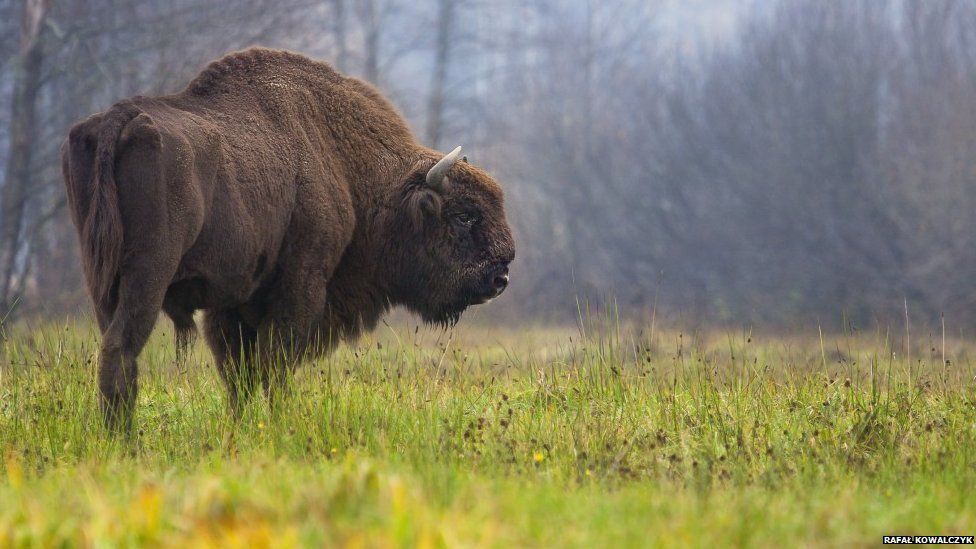Cave paintings reveal clues to mystery Ice Age beast
- Published

Cave art from the Ice Age has helped solve the mysterious origins of Europe's largest land mammal.
The modern European bison, now found only in protected reserves, once roamed widely on the continent.
Studies of ancient DNA show the bison arose from interbreeding between the extinct steppe bison and the aurochs, about 120,000 years ago.
The scientific evidence was confirmed by cave paintings that depict features such as horns and humps.
"When we asked, French cave researchers told us that there were indeed two distinct forms of bison art in Ice Age caves, and it turns out their ages match those of the different species," said Dr Julien Soubrier, from the University of Adelaide.
"We'd never have guessed the cave artists had helpfully painted pictures of both species for us."
Early fossil records have shown that two major forms of bovids (a family of hoofed mammals, including cattle, sheep and goats) were present in Europe: the aurochs (the ancestors of modern cattle) and the steppe bison.
The University of Adelaide researchers used bones from 64 ancient bison to study the origins of the group.
"We were surprised to find that the DNA we were getting back from these bones didn't look entirely like the modern European bison, they looked quite different," lead researcher Prof Alan Cooper, director of the Australian Centre for Ancient DNA at the University of Adelaide, told BBC News.
"We determined that the European bison, bizarrely enough, is a hybrid between an auroch - which is the ancestor of modern cattle - one of the most ferocious wild animals, and a steppe bison, which ranged all the way across the grasslands of Russia, into Alaska and all the way down to Mexico in the Americas."
'Higgs bison'
The findings are a surprise given that, genetically, cows and bison are quite far apart.
Hybrids (the offspring of two animals of different species) are rare - they break the rules of biology and are usually infertile.
The scientists had jokingly nicknamed the hybrid beast - the Higgs bison.
Like the particle long sought by physicists, they were not sure it existed, due to a gap in the fossil record.
"Finding that a hybridisation event led to a completely new species was a real surprise - as this isn't really meant to happen in mammals," said Prof Cooper.
"The genetic signals from the ancient bison bones were very odd, but we weren't quite sure a species really existed - so we referred to it as the Higgs bison."
Radio carbon dating of the bones revealed that each of the bison had been dominant at different times, due to changes in the environment.
The scientists found the age of the cave paintings matched this flux.
The cave paintings came from sites across France and Spain, including Grotte de Lascaux in the Dordogne and Grotte Chauvet-Pont d'Arc in the Ardeche.
Paintings from more than 18,000 years ago show creatures with long horns and hefty forequarters, like the American bison, which is descended from the Steppe bison.
However, more recent paintings (about 12,000 to 17,000 years old) show animals with shorter horns and smaller humps, similar to modern European bison.
"It looks like the cave artists were actually spotting the difference and actually recording them in their art," said Prof Cooper.
"And so the Higgs bison has been hiding in plain sight for all the time, and no-one recognised. The variation in cave art was put down to cultural or stylistic differences."
Re-wilding
The European bison is now largely confined to the Białowieza forest between Poland and Belarus.
The animal was driven to extinction in the wild across Europe about 100 years ago through hunting and habitat loss.
There are now thousands in the wild, all descended from handful of individuals in captivity re-introduced into the wild.
The study is reported in the journal, Nature Communications.
Follow Helen on Twitter @hbriggs.
- Published2 May 2016